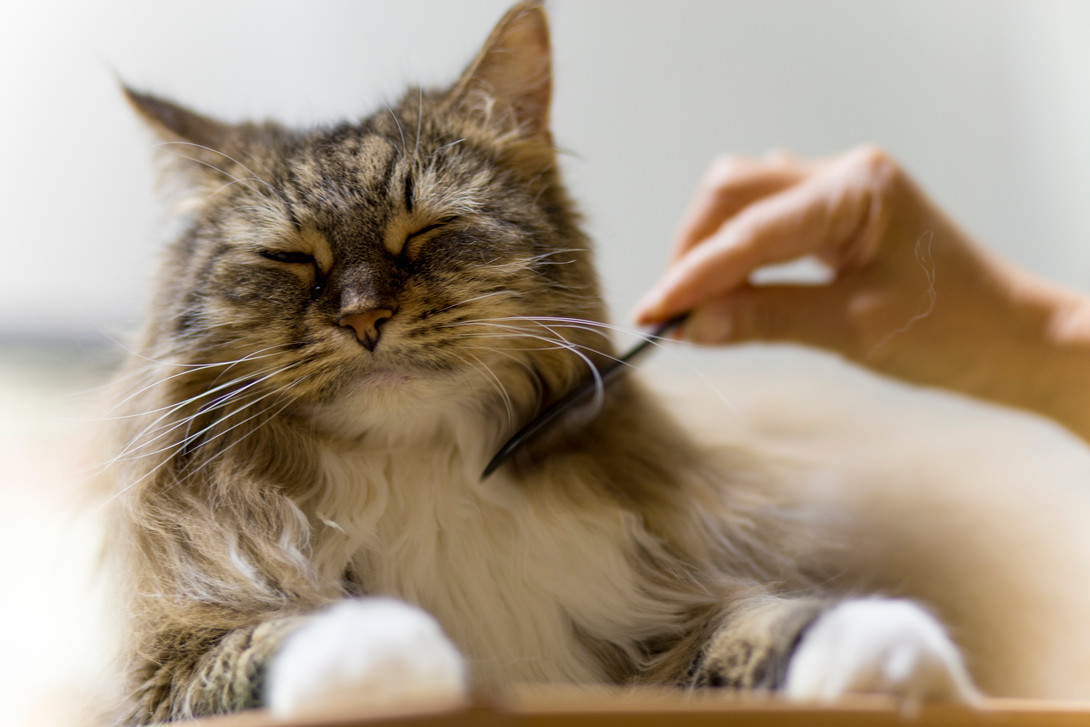Combating hairballs, though an unpleasant topic, is one that cat owners know all too well. Even Garfield, the famous cartoon cat, made it known that a cat’s gotta do, what a cat’s gotta do. Since cats naturally groom themselves, there’s no doubt that most cat owners have had the unpleasant experience of witnessing their cat spit up or choke on their own fur. Though disgusting at times, grooming is actually very important for cats and a lack of grooming can be a sign of illness. Most of the time, cats can easily handle the occasional fur that gets into their digestive system. Typically, the hair easily passes through the intestinal tract and out through the feces with no problems. Unfortunately, on other occasions, the hair gets stuck in the intestinal tract and, well, it has to come out the other way.
To help your clients curb their cats’ hairball problem, particularly those with cats that have thick coats, you’ll want to give them proper care instructions so they know the best treatment techniques possible. The following are some of the most useful ways to help your clients take care to avoid unnecessary hairballs.
Grooming
As tricky as it can be for a pet owner to groom their cat, it’s actually one of the best ways for your clients to help prevent unwanted hairballs. Regularly brushing cats helps to remove loose hair before it’s ingested and therefore limits the amount the cat swallows. In turn, ingesting less hair means fewer hairballs being produced, and that’s a good thing for living room carpets everywhere! While all cats need grooming, long haired cats are especially prone to hairballs, so it is particularly necessary to groom them – some may even require daily brushing. In addition to keeping loose hairs at bay, regularly brushing cats means less matting and even healthier skin.
Special Diet
Numerous commercial cat foods promise to control or prevent hairballs. Most of these diets contain a high volume of fiber which is known to keep things moving along in the gastrointestinal tract. This helps for many felines, but not for all. Some veterinarians actually believe the opposite diet is most helpful for eliminating hairballs and suggest a grain-free diet. The theory behind this is that cats are not naturally accustomed to eating grains and as carnivores, the most natural diet of high protein and low carbohydrates is believed to be better. Diets high in fiber and grains mean changes in a cat’s intestinal tract bacteria which can lead to an inability to properly pass hair. Be sure to discuss proper nutrition with your clients so they are giving their pets the best diet that fits their needs.
Other Health Problems
While it’s normal for cats to relieve an occasional hairball, they should not be doing it regularly. A cat that vomits frequently – with or without hairballs – may have an underlying health issue that needs to be addressed. For example, inflammatory bowel disease has been connected to frequent vomiting, an intestinal lymphoma (a type of cancer.) Your clients should inform you if their cat is frequently vomiting. They may have an extremely sensitive stomach and a change of diet completely may be necessary.
But those issues are few and far between. Most of the time simply keeping your pet groomed is the best and only option a pet owner will need to avoid frequent hairballs.
Our personalized reminder cards are a great way to remind your clients to bring their cats in for a check-up to avoid excess hairballs and other digestion problems. At Positive Impressions, our goal is to help make your job of caring for animals and serving your clients easier by providing you with quality personalized items for your veterinary clinic. Check out our collection of reminder cards, prescription labels , and more that cater to your clients.

